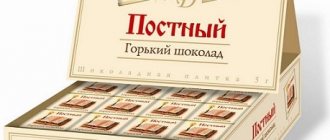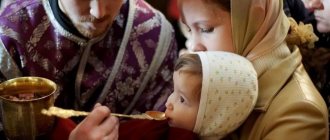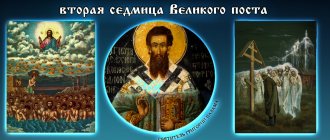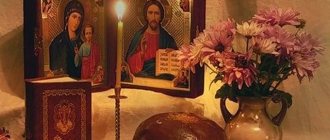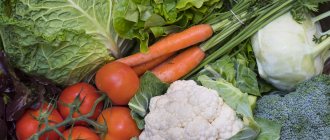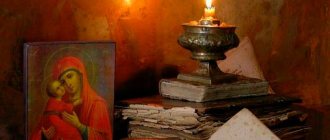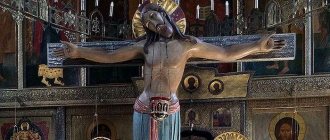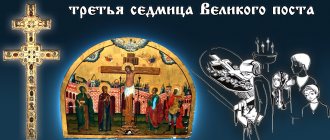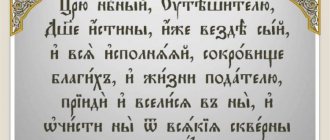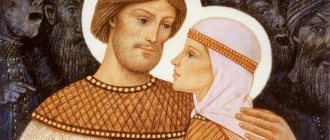March 14 is approaching, and with it Lent. Fasting is a huge inner work of the soul, so you need to seriously prepare for it. Since I am baking bread, we will talk about preparing for nutrition during Lent.
The days of dry eating are the most difficult. At this time, fasting people eat bread and water, while adding vegetables and fruits to their daily diet.
Very often the fasting table is identified with the vegetarian one. But it's not right. The vegetarian table includes products of animal origin: butter, cheese, sour cream, milk, eggs. And the fasting table excludes these foods. Only on Annunciation and Palm Sunday is it allowed to eat fish. Of course, for many, fasting days seem painful and overwhelming. But at the same time, observing moderation and restricting food always only benefits our body. Many gastroenterologists believe that abstaining from foods of animal origin has a beneficial effect on the functioning of the gastrointestinal tract. And if you feel that fasting is not a burden, but a joy, then observing fasting will definitely be beneficial in all respects.
And my task is to make the taste sensations a little more diverse during Lent, and also remind about traditions. In this regard, I am returning again to the topic that has become the meaning of my life, a topic that gives me inspiration and positive feedback, and energizes me for future achievements. Namely, to the topic of baking bread with natural sourdough according to ancient recipes collected in villages.
What kind of bread can you eat during Lent?
During fasting, you should avoid all animal products. This is primarily meat, milk, eggs, fats. On some fasting days, it is also not allowed to eat vegetable oils.
Based on this, the question arises whether eating bread is allowed during Lent, because eggs, milk, and vegetable oil are added to the dough.
The answer to this question is unequivocal: you can eat bread, but only if it is baked without the addition of meat products.
To avoid accidentally consuming something prohibited, you should familiarize yourself with the composition of the product indicated on the label. Many Orthodox believers bake their own bread on these solemn days, and are guaranteed not to eat anything savory. You should not eat baked goods on dry eating days.
Flatbread
For young or very busy housewives, the quickest way is to prepare flatbreads with the addition of a variety of vegetables and herbs.
To prepare them we will need:
- 200 l of water;
- 300 g whole grain flour;
- ½ tbsp. l. salt;
- 1 cup of mixed vegetables, add as desired, bell peppers, sun-dried tomatoes, garlic, olives and any greens are suitable.
Lenten flatbreads with filling
Cooking method:
- Mix water and salt.
- Gradually add flour, stirring the dough constantly.
- Add chopped vegetables.
- Heat the frying pan.
- Place the thinly rolled flatbread in a frying pan and fry on both sides.
- Sprinkle the finished cake lightly with water so that it does not crumble and becomes soft rather than crispy.
We put all the cakes in a bag and store them in the refrigerator. Shelf life - no more than three days.
Are eggs added to the dough?
Many bakeries do not use eggs in their baked goods. But there are still types of bread that cannot be baked without eggs. This applies to rich types of bread.
Various buns, buns, and pie dough are prepared using eggs. Often on the label of a baked goods product it is written that the bread is baked without eggs, but the composition indicates egg powder, which is the same thing. Therefore, you need to carefully read the information about the composition of the product.
In addition, the production of special bread baked especially for fasting people has now been established. This bread does not contain any eggs or egg powder. You cannot add eggs to lean bread.
Conclusion
Concluding the review of the regulations on fasting set out in the Typikon, I would like to emphasize that it was formed on the basis of the living experience of the centuries-old ascetic life of our ancestors and was considered feasible for every average person. The lives of the venerable fathers often describe marvelous feats of fasting that surpass human understanding. Some holy fathers did not eat the entire Great Lent, others fasted until the 9th hour every day and ate food once a day without being full, and still others throughout their lives did not eat not only milk, but even fish, and only put oil on the table. once a year, at Easter. Examples of such fasting can be found even in the biographies of Athonite elders of the 19th and 20th centuries. Therefore, it seems very useful to recognize one’s weakness in the feat of fasting, comparing the customs of Orthodox fasting that are generally accepted today and the recommendations of the Church Charter. And also, with the blessing of the spiritual fathers, diversify the personal feat of fasting, taking for oneself as a rule at least one or another separate requirement of the charter for a certain period of time - for example, for the Nativity fast that has now begun.
Is brown bread lean?
Black bread is made from wholemeal rye flour, without adding eggs, milk or fat. This type of bread is allowed to be consumed during fasting.
The life describes how Sergius of Radonezh ate black bread and drank only water during fasting.
But on days of dry eating, when you cannot eat hot food, even such bread should be excluded from your diet. It is baked and, accordingly, refers to dishes that are cooked over fire.
Take note: black bread is the best option of all types of bread, intended for consumption during Lent.
Recipe for monastery bread for Lent
In 2022, Lent will last from March 7 to April 23. At this time, foods considered savory are excluded from the daily consumption of believers. Many people ask: is it possible to eat bread during Lent 2022?
This product becomes one of the main ones in the diet of fasting people, but must be prepared in accordance with the recommendations.
On what days of Lent can you eat bread? Bakery products cannot be included in the diet on dry eating days (these are Monday, Wednesday and Friday). Accordingly, you can eat them at other times.
What kind of bread can you eat during Lent 2022?
According to the church charter, on days of fasting, eggs, milk and all products based on it (butter, cream, whey, etc.) cannot be included in the diet. On some days it is not allowed to eat vegetable oils.
Accordingly, you should not eat bread made with these ingredients, so it is recommended to pay special attention to the composition of the products, which is given on the labels.
True, sometimes it is indicated here that the product is prepared without eggs, but the composition indicates egg powder, which is essentially the same thing. Some products contain alcoholic beverages, which are also prohibited at this time.
When talking about what kind of bread you can eat during Lent, first of all it is worth recommending black bread, Borodino bread. Such products are made from wholemeal rye flour, without adding eggs, milk or fat.
Is white bread ok during Lent or not? Yes, you can include regular white wheat bread in your menu, the recipe of which does not contain animal products.
Also, during Lent, you can eat bread marked “lenten” on the label, which is sold in stores and church shops. It is allowed to serve Lenten cookies, Lenten gingerbreads, Lenten bread and other baked goods.
In monasteries these days, products are prepared according to different recipes - from traditional ones, which are used in all bakeries, to ancient ones. Eggs, milk and butter are not added to such products. Baking is prepared in sunflower oil, and special yeast-free bread is also baked.
You can bake Lenten bread yourself. If desired, mushrooms, vegetables, fruits, berries, nuts and various spices are added to such products.
Here is a recipe for monastery bread for the duration of Lent .
You will need sourdough ingredients:
- 1/2 cup barley grains,
- wheat grains 1 cup,
- rye flour 1/2 cup,
- premium wheat flour 1 cup,
- sugar 2 tbsp. spoons.
How to make monastery bread:
- Pour a mixture of barley and wheat grains with raw water, cover with a cloth and leave for a day.
- Then drain the water, cover the grains with a damp cloth and leave for two days. Grind the sprouted grains using a meat grinder.
- Add sugar and flour to 1 cup of the mixture, cook for 1 hour over low heat. Leave for 1 day in a warm place (then store in the refrigerator as a starter).
- Prepare the dough: add 1/2 cup of water and enough flour to a piece of sourdough to make a liquid paste (you can also add raisins and nuts to the dough).
- Place the dough in a warm place for 3-5 hours until bubbles and a sour, leavened smell appear.
- Grease a baking sheet with vegetable oil, sprinkle with flour, place the dough in half of the mold, moisten a spatula with water and level the product with it. Place it in a warm place to rise.
- Bake the bread in the oven over low heat. When the product is almost ready, you can apply a design to the surface. To make the crust shiny, 5 minutes before the bread is ready, lightly brush it with water and sugar.
Here is another recipe for monastery bread. It is prepared in the St. John the Baptist Monastery, which is almost 500 years old. This monastery is famous not only for its shrines, but also for its bread.
Ingredients:
- flour – 2/3 parts wheat and 1/3 rye,
- yeast 1 teaspoon,
- sourdough for rye bread 4 teaspoons,
- sugar 3 tbsp. spoons,
- water,
- vegetable oil 5 tbsp. spoons,
- salt 1 teaspoon.
Preparation:
- Combine different types of flour, add sugar, salt, yeast, leaven, vegetable oil and water. Mix everything thoroughly. After this, the dough should rise within about an hour and a half. It needs to be stirred every half hour to enrich it with oxygen.
- After the dough has risen, place it on a greased table and divide into 5 parts, approximately 500 g each. Roll out each.
- Place the resulting buns in the mold and leave for another 40 minutes in a warm place so that the dough rises.
- Bake the products for half an hour at 200 degrees until golden brown.
Here is another recipe for bread from the monastery.
Ingredients:
- 1 kg flour,
- 500 ml water,
- 0.5 tsp dry yeast,
- 0.5 teaspoons sugar,
- 1 teaspoon salt (a little more is possible).
If desired, you can add various herbs, seeds or raisins to the dough.
Preparation:
- Pour sugar and yeast into a 500-700 ml jar, add 200 ml of water and about 200 g of flour, stir with a whisk until the mixture has the consistency of sour cream. Close the jar with a lid and place in a warm place.
- When the jar is completely full, transfer its contents to another bowl and add the remaining water and salt. Mix well and gradually add flour. Knead a plastic dough that should come away easily from your hands.
- Transfer the dough into a pan greased with vegetable oil, cover with a towel, close the dish with a lid and place in a warm place for about an hour to allow the dough to rise.
- Divide the dough into 2 parts and form 2 loaves. Place them on a floured baking sheet, cover with a towel and cellophane on top, and then place in a warm place for about half an hour.
- Make several cuts on each product with a knife (like on a loaf).
- Bake in the oven for 40 minutes at 200 degrees. After this, turn off the oven, but do not remove the products for about an hour.
Place the finished bread on a wire rack so that the bottom crust does not become too soft. To prevent the top crust from going stale, wrap the warm bread in a towel and put it in a bag for a while.
Is it possible to eat Borodino bread during Lent?
Borodino bread is baked from rye flour. It does not contain eggs, milk, margarine, that is, those foods that cannot be eaten during fasting. Therefore, Borodino bread can be present on the Lenten table.
However, at present, many manufacturers add margarine or eggs to the dough to improve the taste, so it is still better to carefully study the composition of the bread, and if fast food products are not indicated, you can safely eat it.
Borodino bread, thanks to herbal additives, perfectly diversifies the food of a fasting person. The bread itself is very filling, so hunger will not torment an Orthodox person during fasting.
Cleansing the soul through prayer and fasting
It is known that fasts have an evangelical establishment. Already the Lord Jesus Christ, at the beginning of His earthly ministry, stayed in the desert for 40 days and fasted.
Long fasts are a tradition established already in the first centuries of Christianity. They were established by the Church so that we come to the bright holidays with a pure heart, a light soul and a renewed body. The Lord and His Mother do not need expensive gifts, but our pure heart, good deeds and fulfillment of the word of God given in the Gospel.
Let us note that fasting as such cannot be called a holiday - each fast is only a preparation for the celebration of Easter, Christmas, Dormition, the memory of the holy apostles - however, symbolically fasting is called a spiritual holiday. All Christians were required to keep a series of fasts, which has survived to this day:
- Great, - calculated 47 days before Easter, which is a moving holiday, ends with the feast of the Entry of the Lord into Jerusalem. Throughout the next Holy Week, believers also strictly fast until Easter.
- Petrov - also considered 50 days after Easter, immediately following the Spiritual Day (Monday after the Feast of Pentecost). Ends on July 12, the day of remembrance of the holy apostles Peter and Paul (that is, July 11 is the last day of fasting).
- Assumption is the only post that is dedicated to the Virgin Mary. It begins on August 14 - the feast of the Origin (that is, the discovery and honoring) of the Tree of the Life-Giving Cross of the Lord. It is also called the Honey Savior (on this day, the honeycombs are filled with honey and its collection begins, for which they are blessed with a special prayer) and the Wet Savior (according to peasant tradition, on this day they cleaned wells and performed water blessing prayers over them), ends on the Feast of the Dormition
- The Nativity Fast begins on November 28 (15 - old style) and lasts until January 7 (December 25), lasts forty days and therefore is called Pentecost in the Church Charter, just like Great Lent.
- Also on Wednesday and Friday every week, except for certain ones, Orthodox Christians fast in memory of the betrayal of the Lord Jesus by Judas (on Wednesday) and the Crucifixion of the Lord (on Friday).
We must strive for a life pleasing to God, attend church, pray during divine services, help people, forgive the sins and mistakes of our neighbors, and behave calmly in conflicts.
Is it possible to eat bread during Lent?
The breads contain flour and vegetable additives; as a rule, they do not contain animal products.
Some manufacturers add milk powder, but to avoid eating this type of bread, you need to familiarize yourself with the composition of the product.
Many breads are made in a special way from soaked grain. These breads are also very healthy.
They have a lot of fiber, which has a beneficial effect on the intestinal system. Therefore, you can eat bread during Lent. A good replacement for black bread. In addition, crispbreads come in rice and oatmeal varieties, so you can add great variety to your table.
Lent and nutrition
More and more of our compatriots are trying to observe fasts. Of these, Lent (February 7 - April 23, 2011) is considered the most strict and significant. How to eat right these days?
For those who will be fasting for the first time, Lent probably seems like a serious challenge. In vain, such a nutrition system is no worse than any diet. Moreover, as a result of restrictions, the body will be cleansed of toxins, blood vessels will be cleansed of cholesterol plaques, metabolic processes and blood condition will improve. In addition, the Church gives concessions to newcomers, as well as to the sick, elderly, pregnant women and those who have had poor and irregular meals throughout the year (for example, low-income families).
Is it possible to eat yeast bread during Lent?
You can eat yeast bread if it does not contain any fast food products. For example, eggs or margarine or milk.
Bread dough should ideally contain only rye flour, water, salt, and yeast. Vegetable oil is allowed, and even then it is most often used only to lubricate the mold.
Yeast is not a product of animal origin, but a special type of fungus, so products made from yeast dough can be eaten. The main thing is that it does not contain prohibited products.
Potato bread
This bread is unique in its amazing softness, but it dries quickly, so you should not cook it in advance.
Ingredients:
- wheat flour - 0.5 kg (add if necessary);
- water or decoction after potatoes - 1 glass;
- 2 potatoes;
- vegetable oil - 4 tbsp. l.;
- dry yeast - 8 g;
- sugar - 1 tsp;
- salt - ½ tbsp. l.
Potato bread
Cooking process:
- Peel the potatoes, cut into small cubes so that they boil better, and cook until fully cooked.
- After cooking, pour the broth into a bowl in which the dough will be kneaded, taking into account its rise. If the broth is not enough, add warm water.
- Make the potatoes into a homogeneous mass without lumps.
- Add 3 tbsp. l. vegetable oil.
- Dissolve yeast, granulated sugar and salt in a slightly warm broth and mix thoroughly.
- Add mashed potatoes to this mixture and mix everything again.
- If there are lumps, you can use a mixer or blender to achieve complete homogeneity of the mixture.
- Now add flour, adding a little at a time. Depending on the quality of flour, the dough can “take” more or less of it.
- Knead the dough as thick as dumplings until the dough comes away from your hands.
- Grease the dough and bowl with sunflower oil and leave for 40-50 minutes to rise.
- Knead the risen dough thoroughly and leave for the second rise for 20-25 minutes.
- Sprinkle the dough board with flour and knead the dough again, forming 1-2 loaves of it.
- Grease a baking sheet with vegetable oil, cover with parchment and place the loaves on it, making oblique cuts on them, leave for another 15-20 minutes under a towel.
- Preheat the oven to 200 degrees and bake the bread for half an hour.
What baked goods can you eat during Lent?
Anything that does not contain animal products can be eaten during Lent. This also applies to bread. During Lent, rye bread and Borodino bread are most often chosen. Many fasting people also eat white bread, but only if it is baked without adding eggs, milk or margarine.
Nowadays many baked goods are produced that are suitable for consumption during Lent. They have a special mark on them indicating this.
Many Orthodox believers bake their own bread. At the same time, they add onions, mushrooms, berries, raisins, and nuts to the bread dough. All these types of breads are allowed, as they contain only plant products.
You can eat uneaten cookies, Lenten pies, Lenten gingerbreads during Lent. All this is easy to prepare at home or buy in a store; during Lent, all this is on sale. Often the bread allowed during Lent is baked at churches.
Irish soda bread
This bread product will cause surprised looks from both family and friends when you serve it either in the form of sandwiches or as a separate dish.
Ingredients:
- 2 cups wheat flour;
- 2 cups rye flour;
- 2 cups oat flour (you can grind the flakes in a coffee grinder);
- 0.5 cups chopped nuts;
- 70 ml vegetable oil;
- ½ tbsp. l. coarse salts;
- ½ tbsp. drinking soda;
- freshly squeezed juice of 1 lemon;
- 3 glasses of water.
Irish soda bread
Read also: How to determine the value of a brand
Cooking method:
- Mix all types of flour, salt, soda and nuts, mix thoroughly.
- Pour lemon juice and vegetable oil into the water.
- Pour the flour mixture into the water-oil solution in a thin stream, while constantly stirring the dough.
- Knead the dough by hand until it becomes dumpling-like, let it sit for 20 minutes. Stir again.
- If necessary, you can add flour and form into loaves.
- Grease a baking dish with vegetable oil and sprinkle with your choice:
- flour;
- coarsely ground flax;
- breadcrumbs;
- sesame.
Place the pan with loaves in a preheated oven for 20-30 minutes. After baking the bread, cover with a kitchen towel.
